In a horsemanship class, you’re judged on how well you maintain all the many details of a correct position as you guide your horse through a pattern of maneuvers (such as straight and curving lines, stops, turns, pivots, and lead changes) determined by the judge. Nowadays, you’re often expected to execute a slow, small circle and a larger, slightly faster circle at both the jog and lope. This article will help you with your horsemanship training.
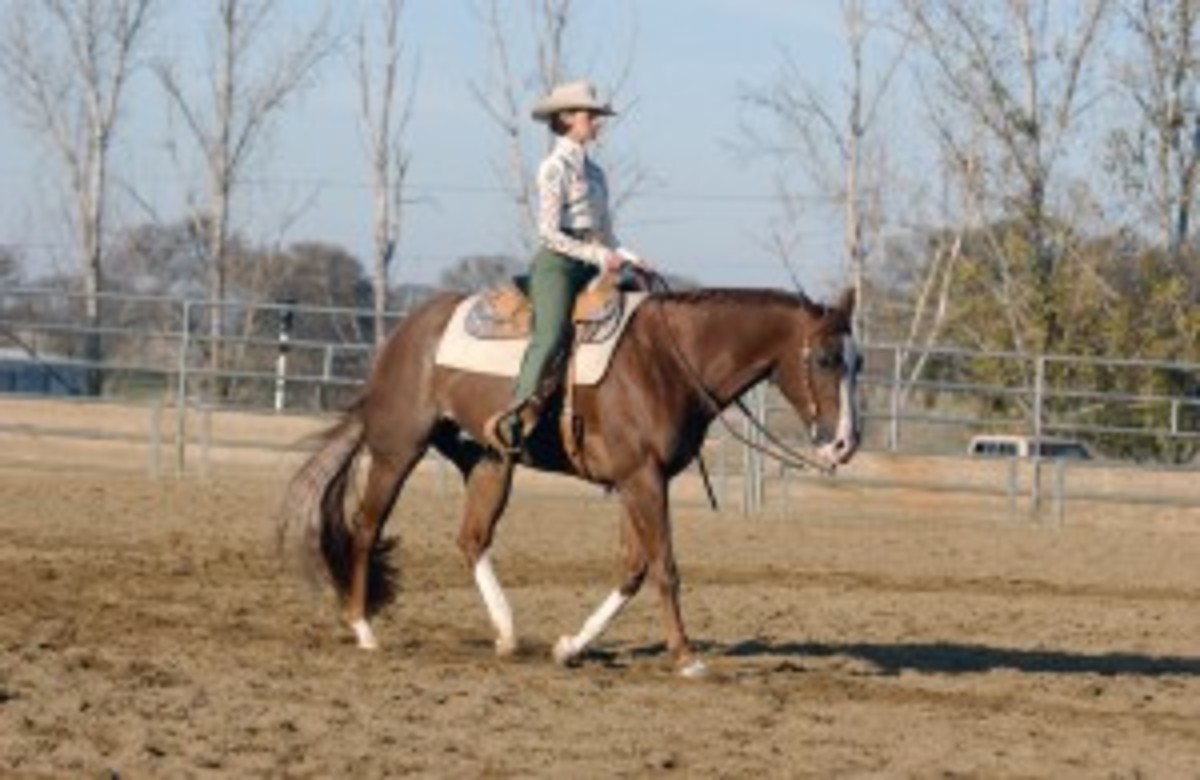
Via my student Alexie Estrada, I’m going to show you the subtleties of proper form in the circling part of the horsemanship pattern, and give examples of the most common faults riders make while riding those circles. I’ll also explain how to present yourself with pizazz in the transition to the extended lope.
In the slow jog, extended jog, and slow lope, your position will be essentially the same?-upright and balanced. (There’s more to it than that, of course; we’ll get to the details in a moment.) At the transition to the slightly faster lope and throughout that circle, you’ll assume a slightly more forward position. That, and a rein hand moved up your horse’s neck, telegraph to the judge that you clearly understand the “increased forward movement” goal of the extended lope.
Altogether, your attention to these and other details will help you stand out in this highly competitive class and better your horsemanship training techniques.
At the Jog
1A. Here’s close to an ideal rider position at the jog, on a small circle. My student’s body is in vertical alignment; you can draw a straight line from her ear through her shoulder and hip, down to her heel. Her chin is up, and she’s looking in the direction she’s going. Her rein hand is grasping the reins near the horn, and her elbow is hanging naturally near her side. Her other hand is positioned near her rein hand. Her weight is in her heel, and her foot is properly positioned, with the toe facing forward at a natural angle. Alexie could be sitting just a tad more upright (she’s a skosh behind the vertical); other than that, she’s in award-winning form.
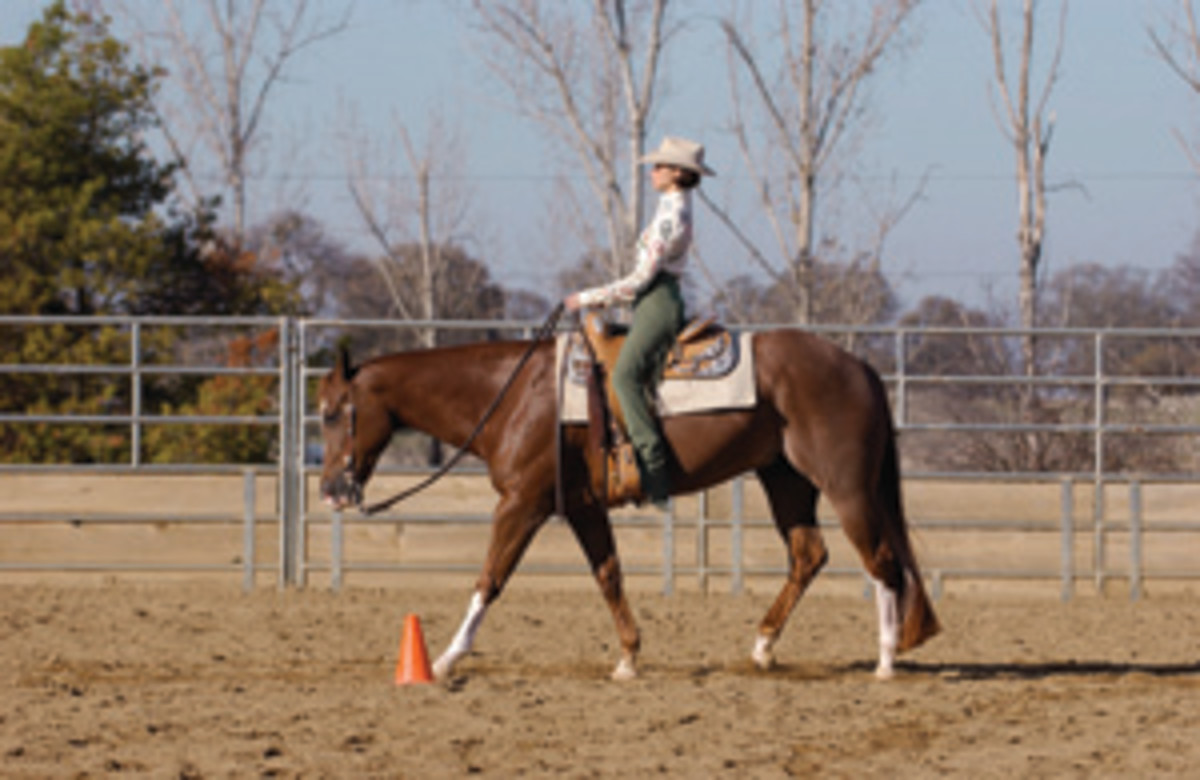
1B. Here my student’s upper body is definitely too far back from the vertical. This has pushed her feet slightly too far forward, where they’re not in ideal position to cue her horse. Her rein hand is both too far forward and too high; her other hand is lagging behind, where it looks “aimless.”
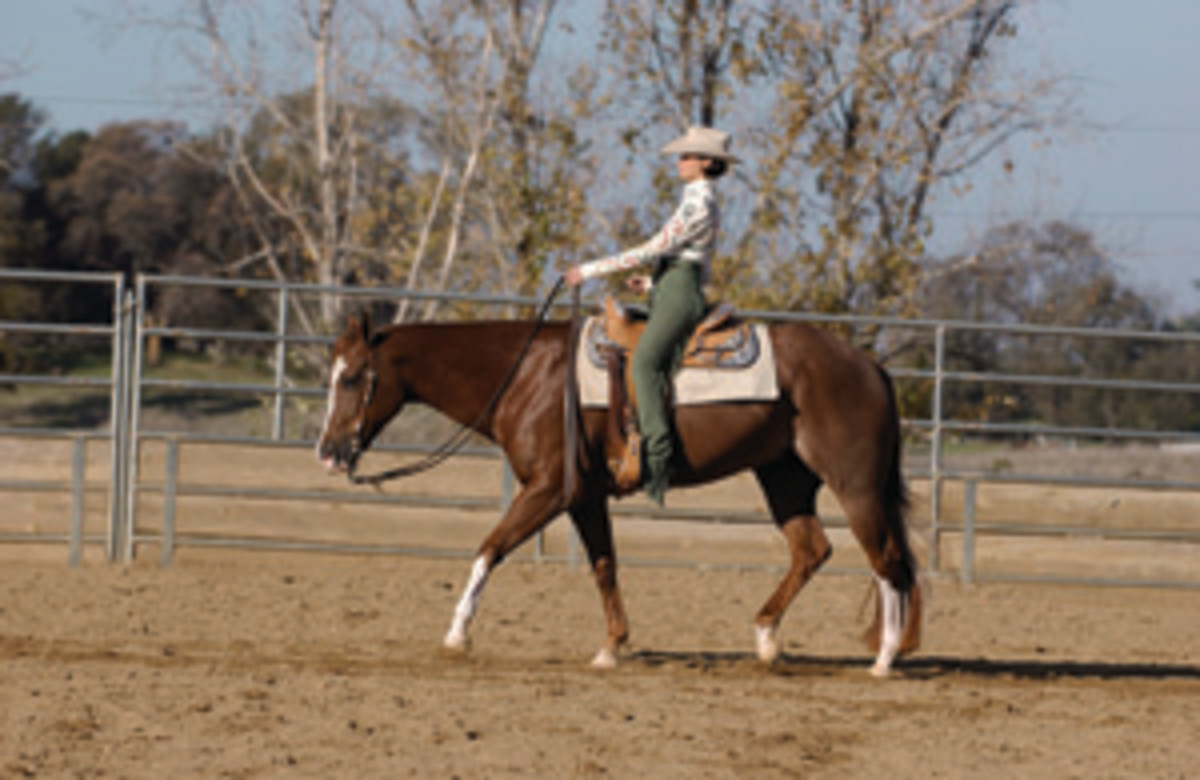
1C. Here she’s brought her upper body too far forward and rounded her shoulders. The impression is one of “doing something” with the horse, as compared to the feeling of natural unity projected by photo 1A. In this tipped-forward position, the rider looks tentative and unsure of herself. Her rein hand has drifted too far forward, and her other hand is hanging back-?both common errors.
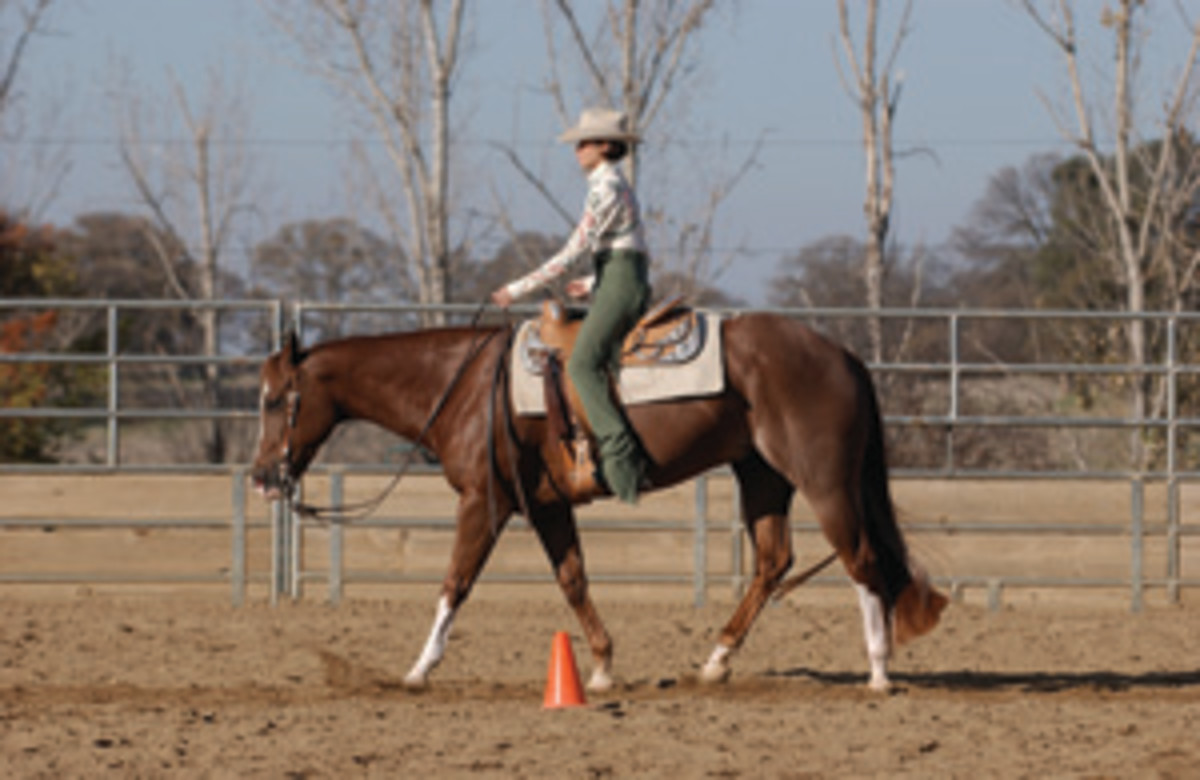
At the Extended Jog
2A. Here my student has closed her leg slightly to ask her gelding to extend his stride slightly, and he has. Her position otherwise has remained the same as it was at the slow jog, only better, as she’s more upright. The message to the judge is “smooth and effortless.”

2B. When riders ask for an extension of gait, they’re often tempted to lean forward to urge the horse on. Don’t do it! Not only does it push your hands out of proper position, it also ruins the image of confident, polished horsemanship you’re trying to project.
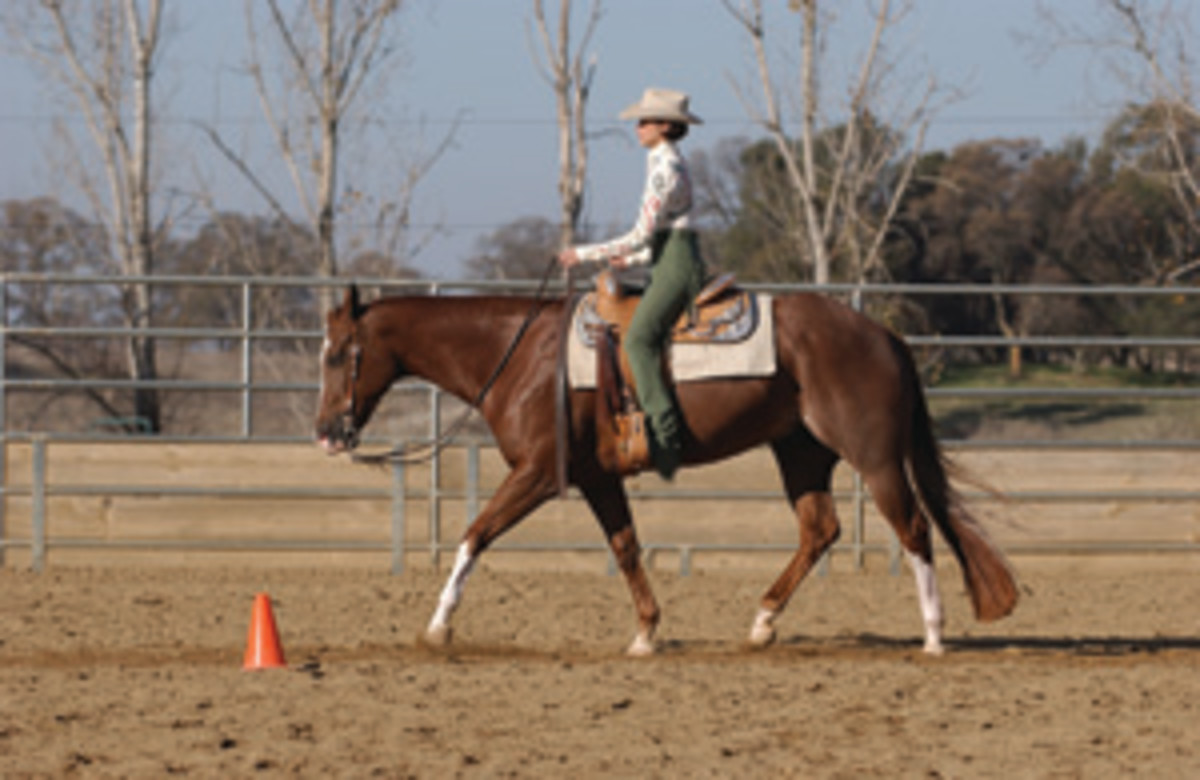
At the Slow Lope
3A. At the slow lope, my student is positioned the same as she was for the jog and extended jog?-her upper body is upright, her hands are at the horn, her weight is in her heels. Here, her lower leg could be just a tad farther back, to allow the straight line falling from her ear and through her hip to pass through her heel, as well. But all in all, this is exceptional form.
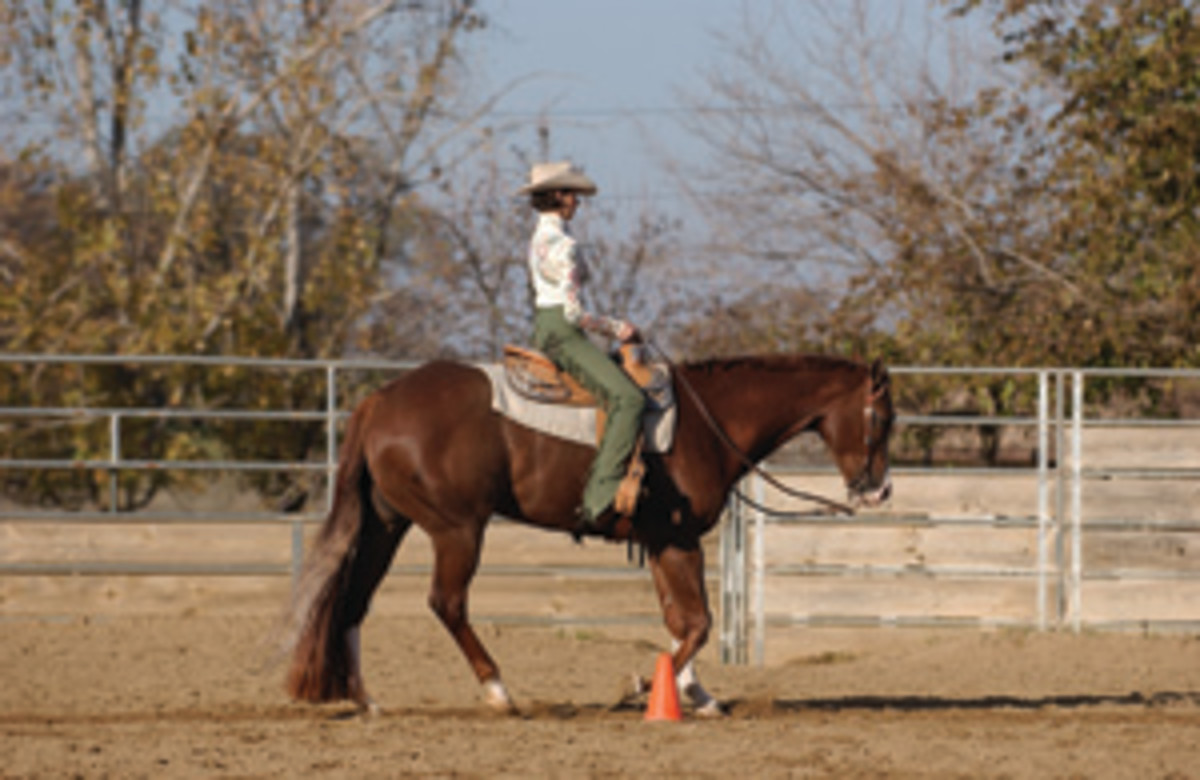
3B. Here’s a common foot-position error. As riders use their spur to steady their horses at the lope, they turn their toes too far to the outside, creating this unsightly effect. As ever, subtlety is the goal, so if you must use your spur, avoid twisting your foot in the process. My student has also let her hands drift out of position, and she’s dropped her chin. All told, an unappealing picture.
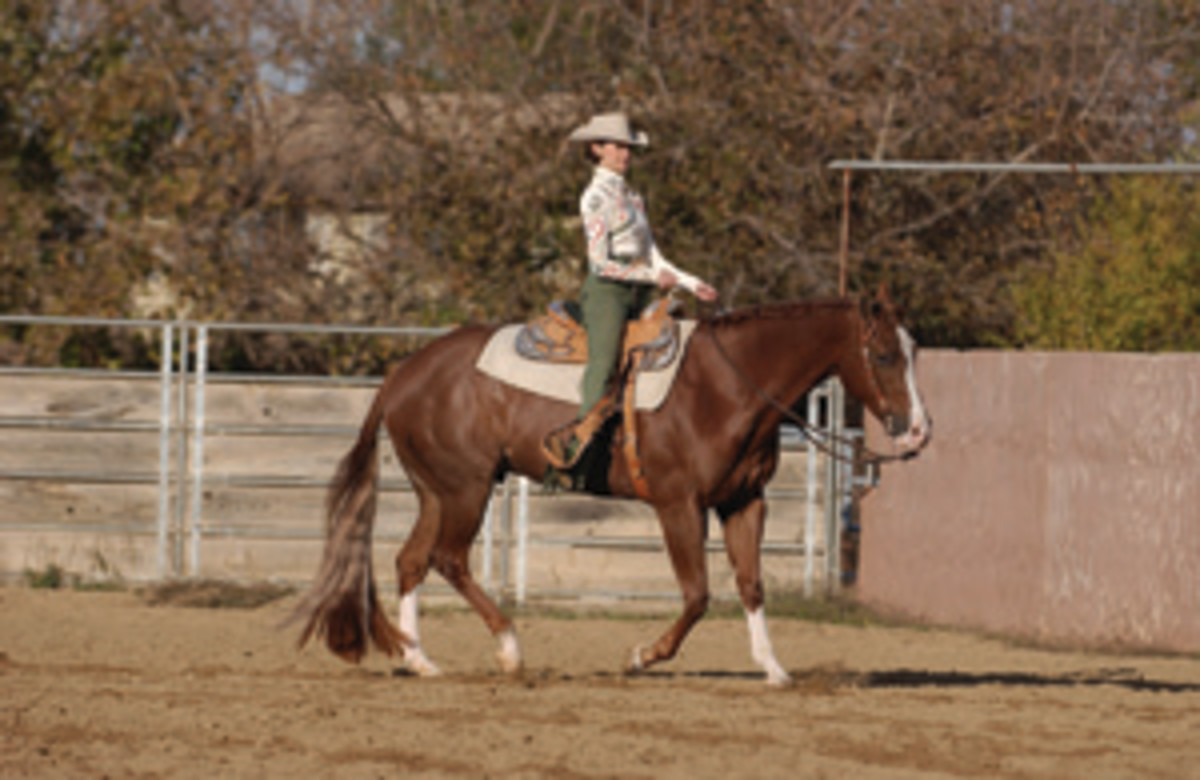
3C. Here my student has assumed a “chair seat.” Her upper body looks OK at a glance, but check out her feet in relation to that plumb line dropping from her ear?-she looks almost as if she’s sitting in a chair. Her legs are too far forward for effective cueing, and her center of balance is too far back. This position practically shouts, “novice rider.”
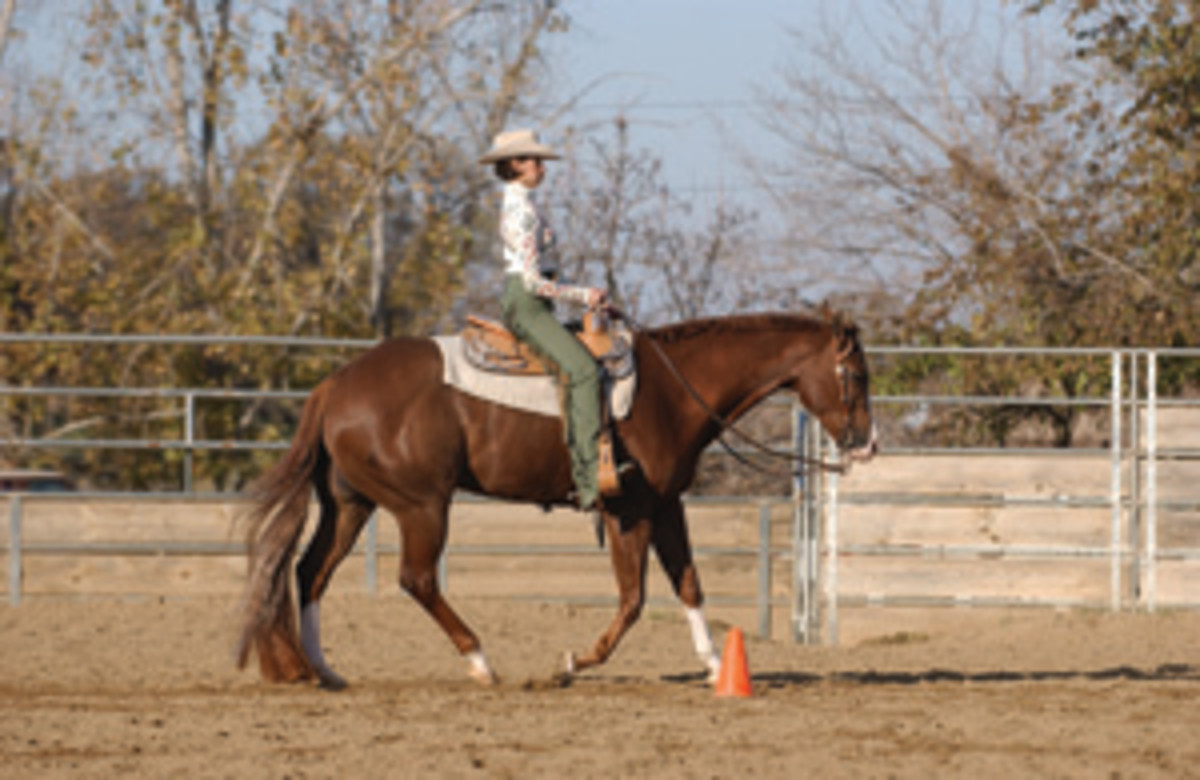
Transition to Forward Lope
4. Unlike at the jog, when you transition to the larger, faster circle at the lope, you do want to change your position slightly. By inclining your upper body slightly ahead of the vertical and moving your rein hand ahead of your other hand, you’re adding a little dramatic flair to your increase in forward motion. Remember to keep your chin up, as my student is here, but try to keep your foot positioned a bit more forward-facing than she is. Maintain this position while you complete the larger circle, then resume the position in 3A as you come back to a slower lope. You’ll catch the judge’s eye with the look of a winner?-in control and sitting pretty.

About the Expert
From her home base in Plymouth, California, Bobbie Emmons coaches youth and amateur clients to state and national championships in virtually every event offered on the Paint circuit. An evergreen threat in all-around competition, she’s had the number-one Paint youth in the nation multiple times over the years.






